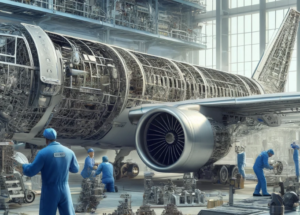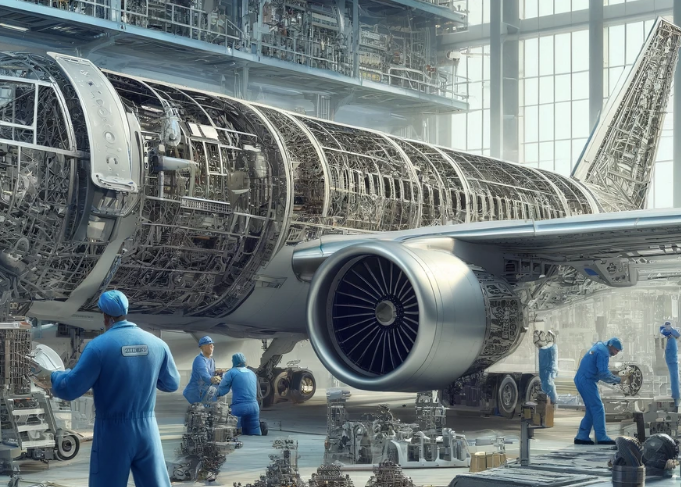As humanity pushes the boundaries of space exploration and dreams of colonizing other planets, the need for advanced, durable, and multifunctional materials becomes more critical than ever. Among the various materials available, titanium stands out as a powerhouse element—offering strength, resistance to extreme environments, and long-term sustainability. In the context of building and sustaining space colonies, titanium isn’t just useful—it could be essential.
This article explores the immense potential of titanium in future space technologies, from infrastructure and life support systems to mobility solutions and energy applications.
Why Titanium Is Perfect for Space Applications
Titanium’s rise in space technology is no accident. It possesses a unique blend of physical and chemical properties that make it ideal for withstanding the harsh conditions of space:
- High strength-to-weight ratio: Critical for reducing payload mass during launches
- Corrosion resistance: Especially important in the presence of cosmic radiation and atmospheric extremes
- Extreme temperature tolerance: Performs reliably from sub-zero to scorching-hot environments
- Biocompatibility: Safe for human-related applications like implants or life-support components
- Non-magnetic and non-toxic: Beneficial in sensitive electronic and life-sustaining environments
1. Building Structures on the Moon and Mars
Titanium in Habitat Construction
On the Moon or Mars, building reliable shelters is one of the top priorities for human survival. These habitats must withstand radiation, micrometeorite impacts, and massive temperature fluctuations. Titanium alloys offer superior protection compared to aluminum or steel, while being much lighter and more durable.
Potential Uses:
- External habitat frames and shells
- Radiation shielding panels
- Pressure-resistant airlocks and windows
3D Printing with Titanium on Mars
With in-situ resource utilization (ISRU) becoming a cornerstone of space colonization, the idea of 3D printing structures using locally available materials is gaining traction. Interestingly, Martian regolith contains titanium dioxide, which, with future tech, could be processed into usable titanium for on-site construction.
2. Life Support Systems and Human Health
Titanium in Medical and Biotech Applications
Life in space poses numerous health challenges. Titanium is already used in orthopedic implants and surgical tools on Earth due to its biocompatibility and resistance to bodily fluids. In space colonies, this could translate into:
- Implantable medical devices for astronauts
- Sterile surgical tools that resist bacterial contamination
- Exoskeletons to counter muscle atrophy from zero gravity
Water and Air Filtration Systems
Titanium dioxide is widely used in photocatalytic filters, capable of purifying air and water using UV light. These systems are compact, efficient, and ideal for closed-loop life support systems in lunar or Martian habitats.
3. Space Transportation and Mobility
Spacecraft and Rover Components
Titanium is already a staple in aerospace manufacturing. NASA and SpaceX use titanium in rockets and satellites due to its lightweight strength and heat resistance. Future space colonies will require a fleet of transport vehicles, rovers, and drones, and titanium-based parts will play a central role in:
- Structural frames
- Engine components
- Landing gear
- Suspension systems for surface vehicles
Protective Exosuits and Mobility Aids
In harsh planetary environments, astronauts will need mobility suits that can withstand abrasion, pressure differences, and impact. Titanium can be used to build protective plates or articulated joints in these suits, improving both safety and mobility.
4. Energy Storage and Generation
Titanium in Solar Energy Systems
Energy is a top priority for space colonies. Solar energy will likely be the dominant power source, and titanium can play a role in both mounting systems and energy storage:
- Titanium supports and structures for solar panels can endure harsh surface conditions
- Titanium dioxide coatings improve solar cell efficiency by reducing reflection and increasing durability
Battery Technology
As explored in previous developments, titanium-based anodes such as lithium titanium oxide (LTO) provide:
- Faster charging
- Enhanced safety
- Longer lifespans
In space, these benefits are vital for both stationary energy storage and mobile power systems like rovers or personal life-support units.
5. Radiation Protection and Safety
One of the biggest threats in space is radiation. While titanium is not a perfect shield like lead, it does provide notable protection from cosmic rays and solar radiation, especially when combined with other materials.
Titanium could serve as:
- A first line of defense in multilayered shielding systems
- Protective layers around critical electronics or crew compartments
- Reinforced enclosures for nuclear-powered systems or reactors
6. Sustainability and Recycling in Space
Closed-Loop Material Use
Sustainability in a space colony isn’t just about environmentalism—it’s about survival. Materials must be recyclable and reusable. Titanium is:
- Highly recyclable without degrading quality
- Resistant to corrosion and fatigue, reducing the need for frequent replacement
- A candidate for in-situ recycling systems where old parts can be repurposed into new tools or structures
This reduces the need for costly supply missions from Earth and contributes to a circular material economy within space habitats.
Challenges of Using Titanium in Space—And Solutions
Despite its advantages, titanium is not without drawbacks:
- Expensive to process and machine
- Reactive at high temperatures when exposed to oxygen
- Requires advanced fabrication techniques
However, recent advances are addressing these issues:
- Additive manufacturing (3D printing) with titanium powders is becoming more accessible
- New protective coatings reduce oxidation risk
- Research into extraction from lunar or Martian soil could provide local sources of titanium
Titanium’s Role in the Future of Space Civilization
In the grand vision of off-Earth living, titanium is much more than just another material. It is a multi-functional, long-lasting, and future-proof resource. Whether we’re establishing lunar bases, building Martian cities, or setting up research stations on Europa, titanium will likely be woven into the very fabric of human survival in space.
From structures and systems to tools and technologies, titanium empowers engineers and scientists to design for longevity, adaptability, and resilience—three pillars of successful space colonization.
SEO Keywords: titanium in space exploration, space colony construction materials, titanium-based space tech, lunar habitat materials, Martian building resources, titanium for spacecraft, space energy systems, titanium recycling in space, radiation shielding materials, future-proof space technologies
Would you like a version focused specifically on lunar or Martian applications? I can tailor it to specific space agencies or missions like Artemis or Mars One.

Also Read :
